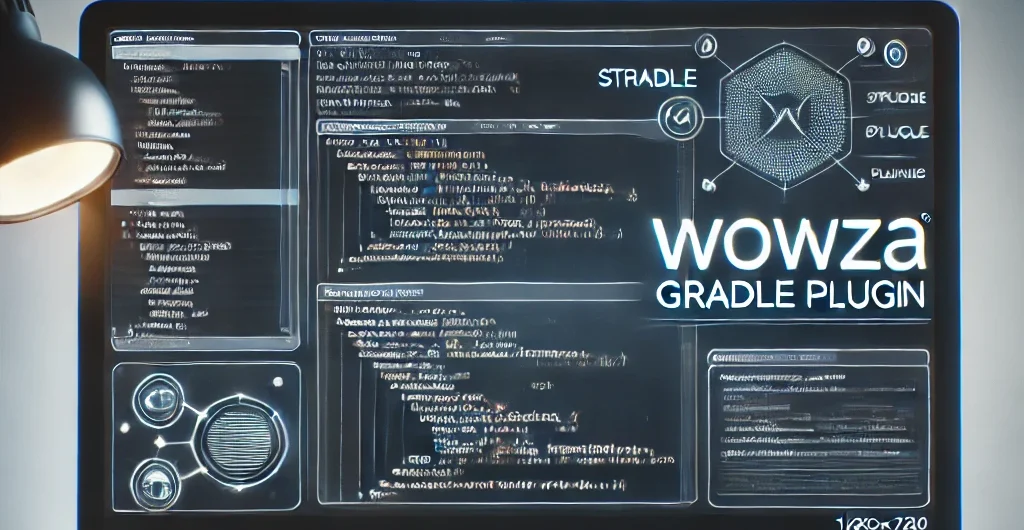Gradle itself is a build automation tool commonly used for Java projects, and the Wowza Gradle Plugin extends Gradle’s power specifically for Wowza projects. By adding this plugin to your project, you can simplify many steps, from managing dependencies to building and testing code. This plugin is very helpful, especially for people who want a quicker way to set up and run Wowza streaming projects without hassle.
Why Use the Wowza Gradle Plugin?
There are several reasons why the Wowza Gradle Plugin has become popular among developers working with Wowza servers. First, it helps automate repetitive tasks, making the development process more efficient. Instead of having to set up everything manually each time, the plugin takes care of much of the groundwork.
Additionally, the Wowza Gradle Plugin makes it easier to manage multiple projects and maintain consistency across different setups. Whether you’re working on a live streaming application or a media playback platform, the Wowza Gradle Plugin offers tools to keep your projects running smoothly.
Key Features of the Wowza Gradle Plugin
The Wowza Gradle Plugin offers various features that make it easier to work with Wowza streaming servers. Here are some of its key features:
1. Automated Builds
With the Wowza Gradle Plugin, developers can automate the build process, which means the plugin handles the compilation and packaging of your code. This feature is useful for teams or individuals who want to speed up the development cycle.
2. Dependency Management
One of Gradle’s strong points is dependency management. This allows developers to easily add and manage external libraries that their project needs. The Wowza Gradle Plugin extends this capability to Wowza projects, making it easier to add, remove, or update dependencies.
3. Simplified Deployment
Deploying to Wowza servers can be complicated without the right tools. The Wowza Gradle Plugin simplifies the process, enabling developers to upload and configure applications directly on Wowza streaming servers with just a few commands.
4. Testing and Debugging
Testing is a big part of any development process. The Wowza Gradle Plugin makes it easier to set up testing environments, allowing developers to test their applications on a simulated server before deploying them live.
5. Consistent Project Structure
Using the Wowza Gradle Plugin, you can maintain a consistent project structure, which can help keep your project organized and easy to manage over time. This is especially helpful when you are working on multiple projects or collaborating with others.
Getting Started with the Wowza Gradle Plugin
Now that we know what the Wowza Gradle Plugin can do, let’s look at how to set it up. Getting started with the Wowza Gradle Plugin is simple, and we’ll guide you through each step.
Step 1: Install Gradle
First, you need to have Gradle installed on your computer. You can download it from the official Gradle website. Once downloaded, follow the instructions to set it up. After installation, verify it by running gradle -v in your command line, which should display the Gradle version if installed correctly.
Step 2: Add the Wowza Gradle Plugin
Next, you need to add the Wowza Gradle Plugin to your project. In the build.gradle file of your project, include the plugin by adding the following line:
groovyCopy codeplugins {
id 'com.wowza.gradle-plugin' version '1.0.0'
}
This line tells Gradle to use the Wowza Gradle Plugin. Be sure to replace '1.0.0' with the latest version number of the plugin.
Step 3: Configure the Plugin
Once the plugin is added, configure it to meet your project’s specific requirements. You can specify settings like server IP, application name, and other configurations to make sure your Wowza setup aligns with your goals.
How to Use the Wowza Gradle Plugin in a Project
Using the Wowza Gradle Plugin is quite straightforward. With it, you can run commands that help you manage your Wowza server setup and handle deployment tasks efficiently. Here’s a quick look at some common commands you might use with the Wowza Gradle Plugin:
1. Build Command
The build command helps you compile your code and package it into a format that can be deployed on Wowza servers. Run this command to generate the final build of your project.
bashCopy codegradle build
2. Deploy Command
The deploy command is used to upload your project to a Wowza server. This is a key feature for developers who want a simple way to get their application live.
bashCopy codegradle deploy
3. Clean Command
Running the clean command removes old builds and unnecessary files, keeping your project clean and organized.
bashCopy codegradle clean
4. Test Command
Testing is essential to ensure everything is working as expected. The test command allows you to run your project in a simulated Wowza environment to see how it performs.
bashCopy codegradle test
Best Practices for Using the Wowza Gradle Plugin
To get the most out of the Wowza Gradle Plugin, it’s helpful to follow some best practices. Here are a few tips to keep in mind:
- Regularly Update the Plugin: New versions of the Wowza Gradle Plugin come with improvements and bug fixes. Keeping the plugin up-to-date ensures you benefit from the latest features and security patches.
- Keep Your Configuration Files Organized: Configuration is key when working with any plugin. Make sure to clearly label and organize your configuration settings to make future updates easier.
- Use Version Control: Using a version control system like Git can be very helpful, especially when making changes to your Wowza project. It allows you to track changes and roll back if something goes wrong.
- Document Your Setup: Documenting how your project is set up with the Wowza Gradle Plugin will be useful for anyone else who might work on it in the future. This is also helpful if you need to troubleshoot or transfer the project to another server.
Conclusion
The Wowza Gradle Plugin is a powerful tool for developers working with Wowza streaming servers. It simplifies many aspects of project setup, dependency management, and deployment. By following the steps outlined in this article, you can make your streaming projects more efficient and easier to manage.






